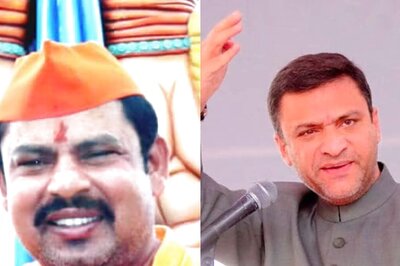
views
2018 marked a return to formula politics. Electioneering tactics were new, but strategies were based on the same old populist and interest group-specific recipes of yore. The only difference lay in the role-swap by the leading players, with the Congress promising farmers the moon, aligning with majoritarian sentiment and wooing OBCs, while the BJP floundered for lack of a coherent narrative.
From the voters' perspective, the striking dissimilarity with 2013 is the absence of a 'hope' factor. The development mantra has proved hollow, but there's nothing to take its place. No alternative vision, no promise of a better tomorrow.
As a result of the Opposition's vision deficit, the build-up of anti-incumbency against the Centre was slow. In the first half of 2018, the Congress lost traction among voters in the north-east and in Karnataka, owing largely to local anti-incumbency. Towards the end of the year, the scenario changed, with the Congress taking tactical advantage of mounting frustration against the Centre.
The significant takeaway from elections in the Hindi belt was not so much that the BJP fell prey to anti-incumbency, but that the Congress was able to take advantage of it. The BJP is never at its best in defensive mode - no party is, really. And that's the beauty of democracy; shackled by constitutional proprieties and fiscal constraints, the incumbent is usually at a disadvantage!
To the Congress old guard goes the credit for having seized the day and effectively scaled up the grievances against the BJP-led governments into full-fledged 'negative' votes, and thus, enabled Rahul Gandhi to emerge as a credible politician for the first time.
Vitamin 'S' for ‘sattha’ has fortified the Congress, but counter-intuitively, it has also made the party's task in 2019 tougher. The party must now contend with a double handicap: a reversal of anti-incumbency in the very states it is relying on to boost its tally in the Lok Sabha and the threat of dissidence, as a result of generational transition being put on hold.
Nonetheless, the Congress' problems are dwarfed by the BJP's. Anti-incumbency - basically, static incomes and unemployment - has taken a toll. So has the attempt to win over Dalits at the expense of upper caste vote banks, even as taxation reforms have piqued its core supporters.
The biggest problem, however, for the party would be if electoral reverses foment leadership issues. Sub-terranean discontent may find vent through public articulation of grievances, especially if more leaders start to fancy their chances and throw their hat in the ring.
BJP president Amit Shah has been criticised for his style of functioning. His handling of the Karnataka government formation, over-dependence on digital marketing and failure to keep the NDA constituents happy have all come in for scrutiny. He must now stoop to conquer, as he has already done in Bihar.
That brings us to the role of the RSS. After strategically jettisoning hardline stances in a public outreach programme earlier in the year, it has fallen back on the tried-and-trusted Ram Janmabhoomi issue. This and this alone, party insiders contend, will snatch the BJP's hopes of re-election from the furnace. On the other hand, it dilutes PM Modi's vikas purush image.
At the close of 2018, the BJP is weaker, the Congress somewhat stronger and the balance of power lies firmly with the regional forces. The Left Front is moribund, the TDP and SAD have suffered reverses of late.
But the thumping victory of the TRS over the Congress has underlined the fact that the TRS, TMC, BJD, YSR Congress and BSP-SP in alliance are poised to win the majority of Lok Sabha seats in their respective states (which account for 185 seats) and are perfectly capable of doing so independent of the two national parties. TRS chief K Chandrashekar's dream of a federal front is not as pie-in-the-sky as it seems.
As of now, the Congress has more allies (DMK, NCP, JMM and JD-S) than the BJP, but this isn't always electorally advantageous. Witness the debacle in Telangana, where its tie-up with the TDP was predicated on a combined vote share of 49 per cent, but plummeted by an astounding 17 per cent. Besides, it is far behind in the numbers game and every seat ceded to an ally potentially takes away from its tally.
The electoral fortunes of the principle players in 2019 are uncertain, even as they mouth the same old shibboleths. The voter, meanwhile, is curiously stoical, displaying none of the excitement, depth of engagement or anticipation of change that was so evident in the run-up to Lok Sabha 2014.
(Author is a senior journalist. Views are personal)



















Comments
0 comment